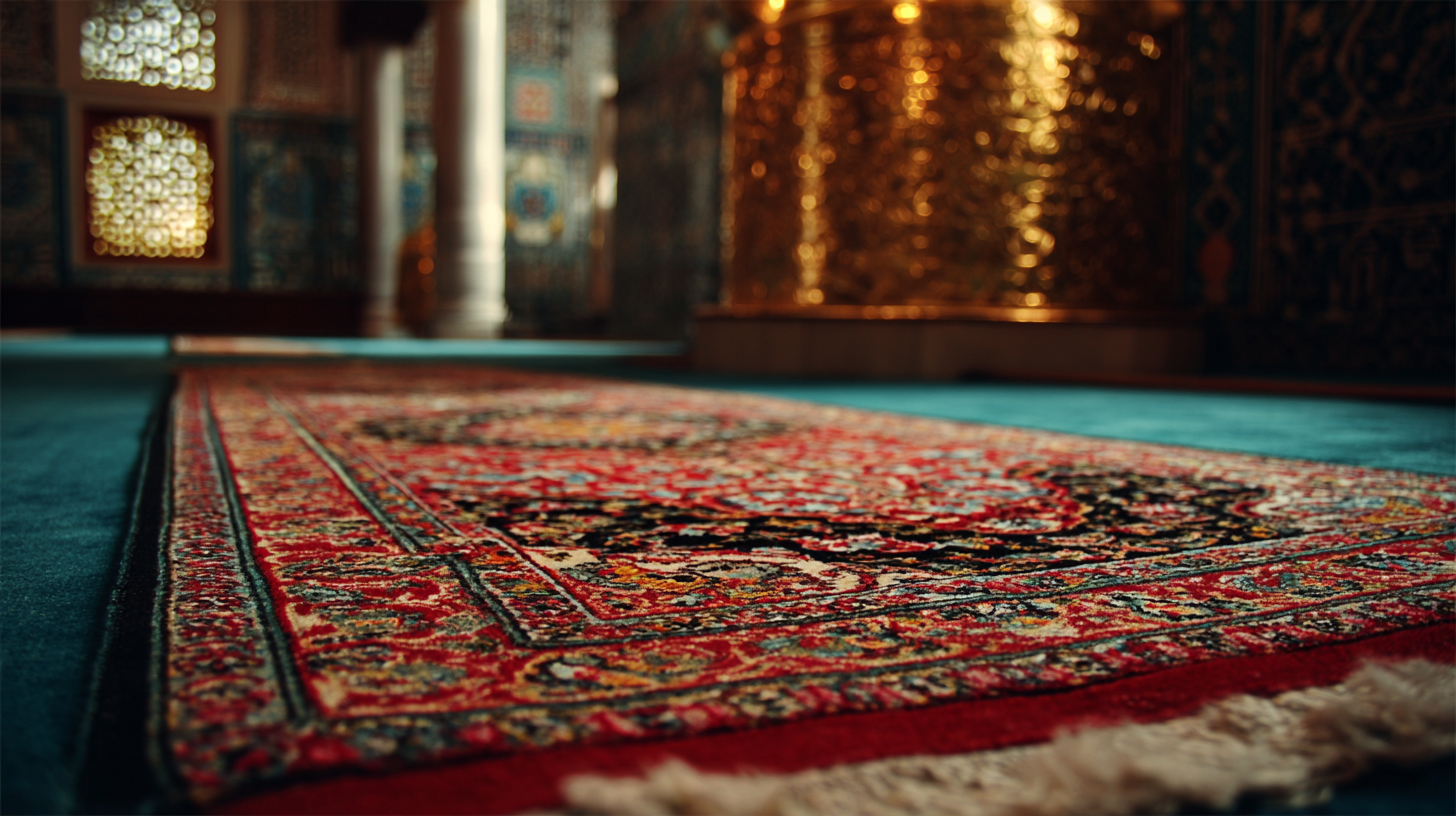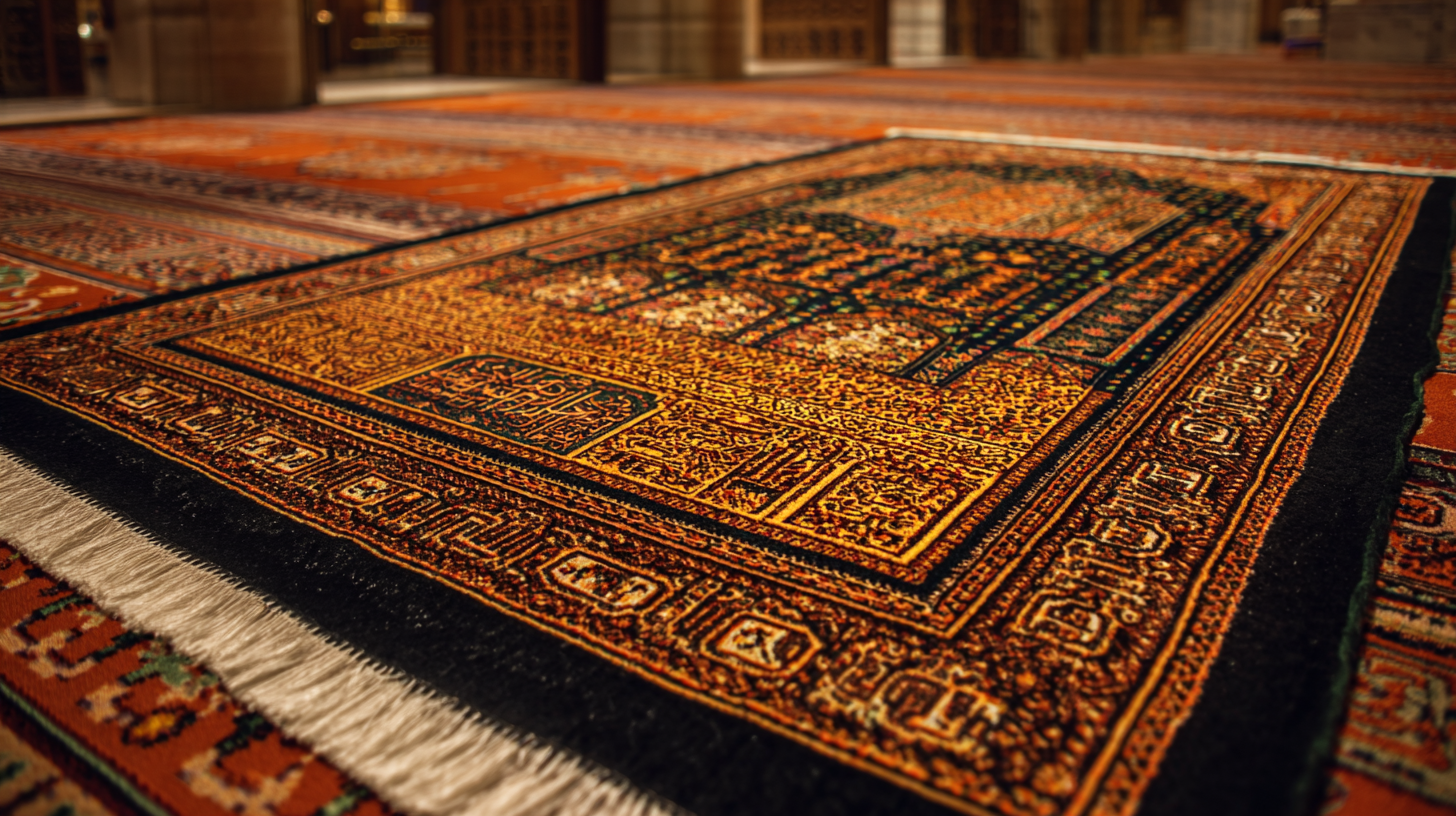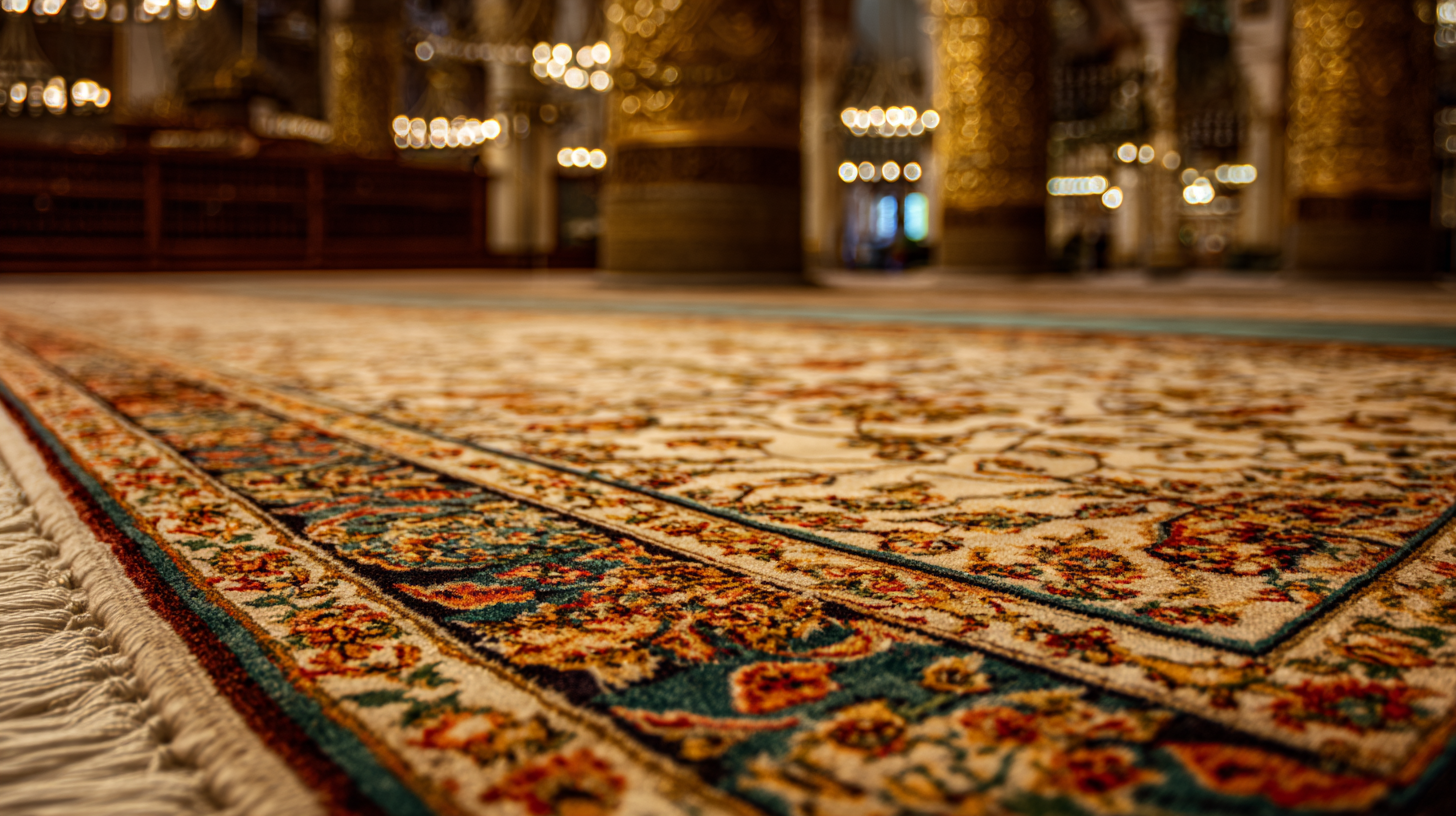
-
Home
-
About Us
-
Products
-
News
-
Blog
-
Contact Us
Leave Your Message

When seeking to purchase the ideal Islamic Prayer Rug, it is essential to consider multiple factors that influence both the quality and the value of your investment. The global Islamic rug market has seen a notable increase, with reports indicating a growth rate of approximately 5.3% annually over the past five years, reflecting a surge in demand among Muslim communities worldwide. With this rising trend, selecting the best Islamic Prayer Rug not only involves aesthetic considerations but also encompasses critical aspects such as after-sales service advantages and maintenance costs. Understanding the nuances of these factors can significantly enhance your overall experience and satisfaction. By evaluating the offerings of various suppliers and brands, you can make an informed decision that aligns with both your spiritual needs and budget, ensuring that your choice contributes positively to your daily prayers.

When it comes to selecting the perfect Islamic prayer rug, the choice of material is paramount. The right fabric not only enhances the aesthetic appeal of the rug but also affects comfort and durability during prayers. Common materials include wool, cotton, silk, and synthetic fibers, each offering distinct advantages. Wool prayer rugs are revered for their warmth and resilience, providing a soft surface that's ideal for long periods of prayer. On the other hand, cotton rugs are lightweight and breathable, making them an excellent option for warmer climates.
Silk, while luxurious, is often more expensive and delicate, making it suitable for those who prioritize aesthetics and wish to use their rugs for special occasions. Synthetic fibers can mimic the look and feel of natural materials while offering increased durability and ease of maintenance. When choosing the material, consider the frequency of use, climate, and personal preferences in texture and design. By understanding the merits of each type of fabric, you can make an informed decision, ensuring that the prayer rug not only serves a spiritual purpose but also fits seamlessly into your lifestyle.
When it comes to choosing the best Islamic prayer rug, understanding the various styles and designs can greatly enhance your purchasing experience. Prayer rugs, or "sajjadah", are available in a multitude of artistic expressions, each reflecting cultural nuances from different regions. For instance, Persian rugs often showcase intricate floral patterns and vibrant colors, while Turkish designs may feature geometric shapes and symbols that represent spirituality. Each style not only serves a functional purpose but also embodies the rich heritage of the artisan community.

In addition to aesthetic appeal, the design of a prayer rug plays a crucial role in its usability. Traditional rugs are typically larger and provide ample space for prayer movements, while modern interpretations may come in compact sizes that appeal to urban dwellers. Furthermore, consider the material used; natural fibers like wool offer durability and comfort, while synthetic materials can be easier to clean. By thoughtfully considering these factors, you can select a rug that not only complements your personal style but also meets the practical needs of your daily prayers.
When selecting an Islamic prayer rug, size and portability are essential factors that significantly influence your experience. The dimensions of the rug can affect your comfort and ability to concentrate during prayers. A compact rug is ideal for those who are often on the move or travel frequently, as it can easily fit into backpacks or carry-on luggage. Considerations like whether you prefer a traditional size or a smaller, more portable option can help guide your decision.
Portability is equally important, especially in today's fast-paced world. Lightweight materials are preferable for those who need to carry their rugs to different locations, be it for work, travel, or visiting family. Look for rugs made of durable but light fabrics that can withstand regular folding and unfolding without losing their shape. Additionally, ensure the rug comes with a convenient carrying case or strap for added ease. By focusing on these key factors of size and portability, you can choose a prayer rug that not only meets your spiritual needs but also fits seamlessly into your lifestyle.
When selecting an Islamic prayer rug, authenticity plays a crucial role. Authentic prayer rugs are often handcrafted using traditional techniques, which not only ensures their longevity but also their spiritual significance. According to a report by Research and Markets, the global prayer rug market was valued at approximately $1.6 billion in 2021, with a projected CAGR of 4.5% through 2026. This underscores the increasing global demand for authentic, high-quality prayer rugs that reflect cultural and religious values.
Moreover, the importance of authenticity extends beyond aesthetic appeal; it encompasses the ethical practices surrounding production. The World Fair Organization reports that artisan-crafted rugs provide a vital source of income for communities, preserving artisanal skills that might otherwise be lost. Consumers are increasingly aware that purchasing an authentic prayer rug supports not only their spiritual practices but also local economies and craftsmanship. By choosing genuine products, buyers contribute to the sustainability of traditions that have profound cultural significance in the Muslim world.
When you invest in an Islamic prayer rug, caring for it is essential to ensure its longevity and aesthetic appeal. Regular maintenance begins with routine cleaning. Depending on the material, some rugs can be vacuumed gently or shaken out to remove dust and debris. For more delicate fabrics, using a damp cloth and mild detergent can help remove stains without damaging the fibers. Always remember to test any cleaning solution on a small, inconspicuous area first to avoid discoloration.

Humidity can affect the texture and quality of your prayer rug, so proper storage is crucial. If you need to store your rug for an extended period, roll it up rather than folding it, as this prevents creases and maintains its shape. Placing the rug in a dry, cool space away from direct sunlight will also prevent fading.
Additionally, consider using a rug pad underneath to prevent slipping and add an extra layer of protection. By taking these simple yet effective steps, you can keep your prayer rug in excellent condition for many prayers to come.